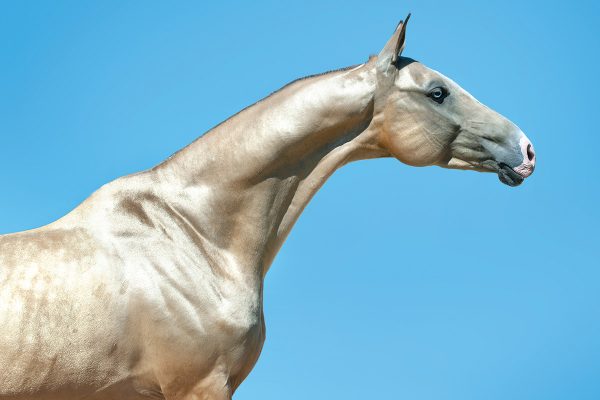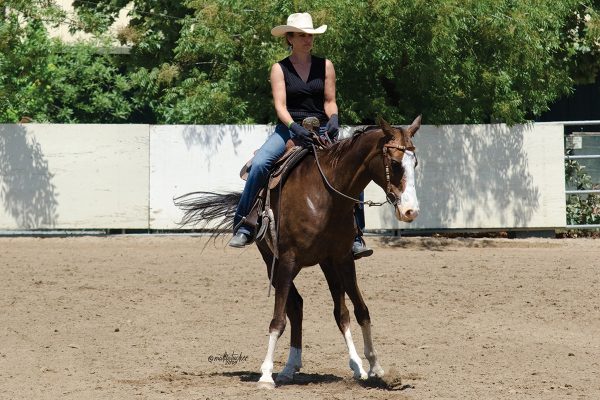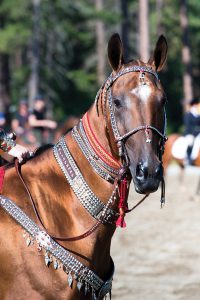When you think of ancient history, what comes to mind: Egyptian pyramids? The Trojan War? The Akhal-Teke horse?

The Akhal-Teke might not be the first thing to pop into your head, but this truly ancient breed can trace its amazing history back more than 3,000 years. Let’s take a closer look!
A Desert Companion
This ancient breed got its start in the desert areas of central Asia, in the country now known as Turkmenistan. It was there that the Akhal-Teke was developed as a companion animal by nomadic people who needed a hardy horse that could stand up to the rigors of desert life. In addition, the horse needed to be able to travel long distances, even when grazing areas were sparse, and be swift-footed on top of that. They were also used as war horses.
These useful attributes didn’t go unnoticed by the rest of the equine world, and the Akhal-Teke has likely influenced the modern Thoroughbred, and is probably in the ancestry of another, more well-known desert equine: the Arabian. The breed seems to have been the horse of choice for famous military men like Alexander the Great and Xerxes.
The Look of an Athlete
The Akhal-Teke possesses a striking physical appearance. Its coat—which can come in several colors, like black, bay, buckskin, gray, and chestnut—often displays an almost metallic luster or sheen, which is unique to the Akhal-Teke.

But there’s more to the breed’s appearance than just a cool coat. These are athletic horses, standing about 15.2 hands with a slender, lengthy body, prominent withers, and powerful, long legs. They have a narrow look about them, with a high-set neck. Performance-wise, they have plenty of endurance, and they’re fast, too. And—not surprising considering their desert origins—they can handle heat well.
The modern Akhal-Teke enjoys a career in many different equestrian disciplines. You’ll find them performing in dressage, show jumping, eventing, and especially endurance riding. Plus, they’re still used as a racehorse in their home country of Turkmenistan.

While they’re indeed excellent athletes, they usually require a somewhat experienced rider and probably aren’t for beginners. The breed standard describes them as “sensible, but also very sensitive.”
One Incredible Ride
You almost can’t discuss the Akhal-Teke without mentioning a particular famous endurance ride. In 1935, a group of Akhal-Teke stallions completed an incredible 2,565-mile endurance ride that took 84 days to finish from Ashgabat, the capital of Turkmenistan, to Moscow, Russia!
The route included varying terrain and obstacles, including 200 miles of desert.

It’s no wonder that Akhal-Tekes were as valued in ancient times as they are today. Nowadays, it’s common to see riders and horses compete in endurance rides in distances of 50 or 100 miles.
A Rare Breed
Despite all their useful attributes, the Akhal-Teke is still quite rare worldwide. The Livestock Conservancy, an organization that monitors rare domesticated animals, considers the Akhal-Teke to be a “threatened” breed, meaning there are fewer than 1,000 annual registrations in the United States and estimated global population of less than 5,000.
The breed is promoted in the United States by the Akhal-Teke Association of America (ATAA), which provides foal registration and awards programs for Akhal-Teke owners. But common or not, there’s no question that the Akhal-Teke is an interesting and amazing horse with many more years of history still in the making!
Akhal-Teke Timeline
Approx. 1000 B.C. – The ancestor of the Akhal-Teke was developed in Turkmenistan.

Approx. 450 B.C. – The Greek historian Herodotus writes about the Akhal-Teke.
1881 – The Akhal-Teke receives its modern name, a combination of Akhal, which refers to a particular oasis, and Teke, which is the name of a nomadic tribe.
1935 – Akhal-Tekes perform a 2,500-mile endurance ride, traveling from Ashgabat, the capital of Turkmenistan, to Moscow, Russia.
1941 – Akhal-Tekes are first included in a studbook.
1960 – The Akhal-Teke stallion Absent wins an Olympic gold medal for dressage at the 1960 Olympic Games in Rome, Italy.
1975 – The Akhal-Teke receives recognition as a purebred, and the International Association of Akhal-Teke Breeding (MAAK) studbook is closed.
1979 – The first Akhal-Tekes are imported to the United States.
1982 – The Akhal-Teke Association of America (ATAA) is started.
This article about the Akhal-Teke appeared in the Summer 2020 issue of Young Rider magazine. Click here to subscribe!


